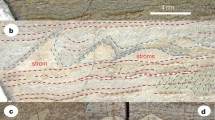Abstract.
A record of the history of the Earth is hidden in the Earth's crust, like the annual rings of an old tree. From very limited records retrieved from deep underground, one can infer the geographical, geological, and biological events that occurred throughout Earth's history. Here we report the discovery of vertically shifted community structures of Archaea in a typical oceanic subseafloor core sample (1410 cm long) recovered from the West Philippine Basin at a depth of 5719 m. Beneath a surface community of ubiquitous deep-sea archaea (marine crenarchaeotic group I; MGI), an unusual archaeal community consisting of extremophilic archaea, such as extreme halophiles and hyperthermophiles, was present. These organisms could not be cultivated, and may be microbial relicts more than 2 million years old. Our discovery of archaeal rDNA in this core sample, probably associated with the past terrestrial volcanic and submarine hydrothermal activities surrounding the West Philippine Basin, serves as potential geomicrobiological evidence reflecting novel records of geologic thermal events in the Pleistocene period concealed in the deep-sea subseafloor.
Similar content being viewed by others
Author information
Authors and Affiliations
Additional information
Electronic Publication
Rights and permissions
About this article
Cite this article
Inagaki, F., Takai, K., Komatsu, T. et al. Archaeology of Archaea: geomicrobiological record of Pleistocene thermal events concealed in a deep-sea subseafloor environment. Extremophiles 5, 385–392 (2001). https://doi.org/10.1007/s007920100211
Received:
Accepted:
Issue Date:
DOI: https://doi.org/10.1007/s007920100211




